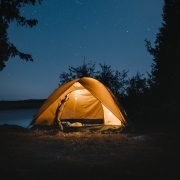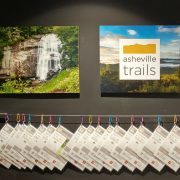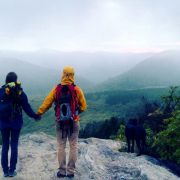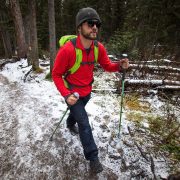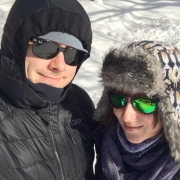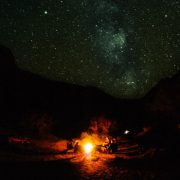When I first told my mother that I wanted to major in Outdoor Leadership, she was scared. My mom did not have very much experience hiking, camping, or otherwise being in the backcountry. She was worried about the inherent risks that come with an outdoor lifestyle.
It took some convincing, but eventually my mother came around and began to feel more at ease when I ventured out past cell service. Here are 5 of my safety plan points that I follow for every trip. They put my mom’s worrying head at ease, and me and those I am traveling with safe.
- Plan ahead and share your plan:
This one seems like an obvious no brainer. You need to have a generalized itinerary before starting a trip. Knowing how much time to drive to the trailhead, a general location of your campsite(s), water sources, and known points of cell service. However, the part that is often forgotten is to share your plan with someone else. It’s important to share your plan with someone who will be in civilization so that if anything goes wrong, you will have an exit strategy.
This is the part of the safety plan that helped my mom the most. When she feels included in my plans, she feels like she will be able to do something in an emergency, and feels better than if I just tell her “I’m going to be in the woods for two weeks. Call you when I get home.” Having information about my location helps her to be able to keep an eye on weather (sometimes texting me warnings if a major storm is approaching). It is also helpful in the case of an emergency on my end. I haven’t had it happen yet, but if I ever don’t show back up into civilization within a day or two of my original plans, my mom would know that something happened, and be able to contact the local authorities to begin searching.
- Bring extra food:
This one is always easy for me to do. I naturally err on the side of bringing more than enough food. Usually whenever I come back from an extended trip, I have at least one day’s worth of food left over. This is completely intentional. Sometimes weather, injury, or just enjoying a camping spot can lead to a zero mile day, and you end up needing to eat for one more day than you originally thought. If you’re going on a day hike, bring at least one extra snack.
- Bring protection:
My mom’s biggest worry for me has always been being a single woman alone in the woods. Naturally, a mom will worry about her daughter doing anything that carries inherent risks. Add hearing too many horror stories to that natural worry, and my safety became an obsession anytime I told my mom plans to go on a solo hike. One way that I’ve been able to help put her more at ease is carrying bear spray and a pocket knife.
- Bring a med pack
I know a lot of people who think that carrying the extra weight of a med-pack isn’t worth it. I disagree. I’ve been able to help many people on trips by carrying some bandages and antibiotic ointment. I’ve been able to tend to wrap my own dislocated ankle and hike to the nearest exit point (that had already been highlighted on my trail map during planning ahead and preparing). I feel more at ease knowing that I’ll be able to help myself or others because I have some basic first aid necessities in my pack.
- Keep a journal
This one is important to me for two reasons. The first is that keeping a journal of your travels can help with planning future trips. If you want to go on the same route again, you’ll be able to look back at your notes and avoid the problems you faced last time. You’ll be able to see which areas you want to spend more time in, and areas that are more prone to congested campsites.
It’s also been helpful to my mom to read through my journals to see how seriously I take my safety, and how much I enjoy being in the wilderness.
There are many other important aspects to safely navigating backcountry. These are just the five that have helped my mom feel at ease the most. Remember that all adventures carry inherent risks that cannot be controlled, but you can be prepared for.

